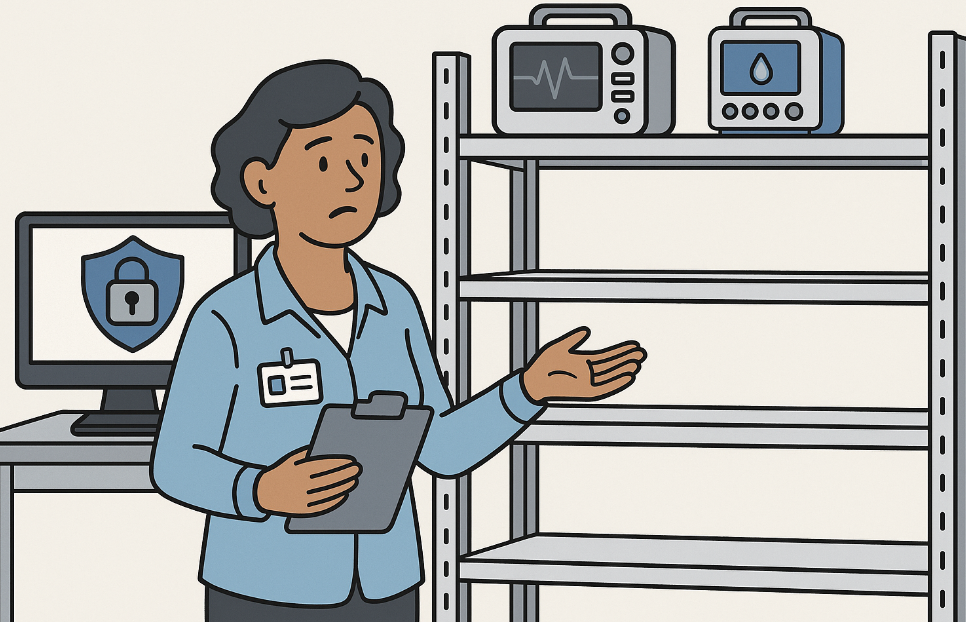
Why Hospitals Are Turning to Blockchain
It started with a gap on the shelf.
When a hospital supply manager did her morning check, two portable monitors were missing—again. They hadn’t been checked out, logged, or replaced. Later that day, she learned the same facility had been hit by a data breach. Patient records and inventory files were exposed. The cost wasn’t just financial—it was a matter of trust, accountability, and safety.
Stories like this aren’t rare. In 2024 alone, global healthcare data breaches cost an average of $4.88 million per incident, according to IBM. For an industry that runs on confidentiality and precision, every missing asset or compromised record ripples outward—to patients, clinicians, and the public.
Now, a team of researchers from the University of Warwick and partners across Europe and Asia say they’ve tested a new way forward: using blockchain technology powered by “Proof of Authority” (PoA) to make healthcare asset management more ethical, transparent, and secure.
The Problem: Fragile Systems in a High-Stakes Industry
Hospitals juggle thousands of physical and digital assets—from infusion pumps to ventilators to patient records. Traditional databases are centralized, meaning a single breach or administrative mistake can compromise everything. Even well-intentioned fixes, like security training or updated HIPAA protocols, can’t keep up with the pace of cyber threats or the complexity of modern healthcare logistics.
Add strict laws like Europe’s GDPR or the U.K.’s Data Protection Act, and the pressure mounts: one compliance failure can lead to fines of up to €20 million or 4 percent of annual revenue. The result? Constant anxiety among healthcare administrators and IT teams struggling to protect both lives and data.
The Experiment: Blockchain Meets Bedside Logistics
Shaikh and colleagues built a blockchain-based framework that tracks every healthcare asset—from equipment to digital records—using smart contracts that automatically verify transactions.
Instead of relying on energy-hungry mining (like Bitcoin), the system uses Proof of Authority, a consensus model where three verified validators—say, hospital administrators or regulatory bodies—must approve each transaction before it’s recorded.
In their test environment, all transfers and updates were recorded on an immutable ledger, creating a complete history of who moved what, when, and why. The framework ran on the Ethereum test network, connected via a MetaMask wallet, and linked with IoT sensors that updated asset locations in real time.
When the digital and physical data matched, assets were verified. When they didn’t, the system flagged discrepancies automatically.
Key Insight
“Once data is written to the blockchain, it cannot be altered, ensuring transparency and preventing tampering,” the authors write.
That feature could make hospital inventories and patient-record systems tamper-proof by design, reducing fraud, theft, and costly delays.
Why Proof of Authority Matters
Many early blockchain applications in healthcare stalled because they were expensive, power-intensive, or slow. PoA solves that by trading anonymity for accountability. Validators are known entities—people or organizations that can be held responsible.
That’s critical for healthcare, where ethics and oversight matter as much as encryption. Every action on the ledger carries a verified digital signature, and every asset transfer is traceable.
The Payoff: Efficiency and Ethics
During testing, most blockchain transactions were validated quickly, and only a few failed due to missing approvals. Each verified action cost less than one U.S. dollar in gas fees.
By combining low cost, transparency, and auditability, the system offers a pathway toward fairer and more ethical resource allocation. In a sector where delays in getting equipment to patients can be life-threatening, that matters.
The framework also aligns with the core public-health principles of accountability, trust, and equity. When assets and data can’t be hidden or manipulated, everyone —from frontline nurses to administrators—can see what they need, when they need it.
What This Means in Practice
For local health departments and hospital leaders:
- Strengthen trust: Create a transparent audit trail for equipment and supplies.
- Cut losses: Prevent misplacement, duplication, and unauthorized use of high-value items.
- Improve compliance: Automate data privacy checks to stay within HIPAA or GDPR rules.
- Empower staff: Reduce paperwork and manual tracking so clinicians can focus on care.
- Plan ethically: Ensure fair distribution of scarce resources during crises.
What’s Next
The authors acknowledge that their system was tested in a simulated environment, not a live hospital. Real-world deployment will require collaboration among public health agencies, IT vendors, and regulators.
Future versions could integrate Proof of Stake or sharding to increase speed and scalability. But the core idea—a ledger of trust built into every transaction—is already reshaping how we think about digital ethics in healthcare.
Open Questions for Readers
- How might your organization apply blockchain principles to increase trust and accountability?
- What barriers—technical or cultural—stand in the way of adopting systems like this?
- Could community health programs benefit from a shared, transparent ledger for resources?



